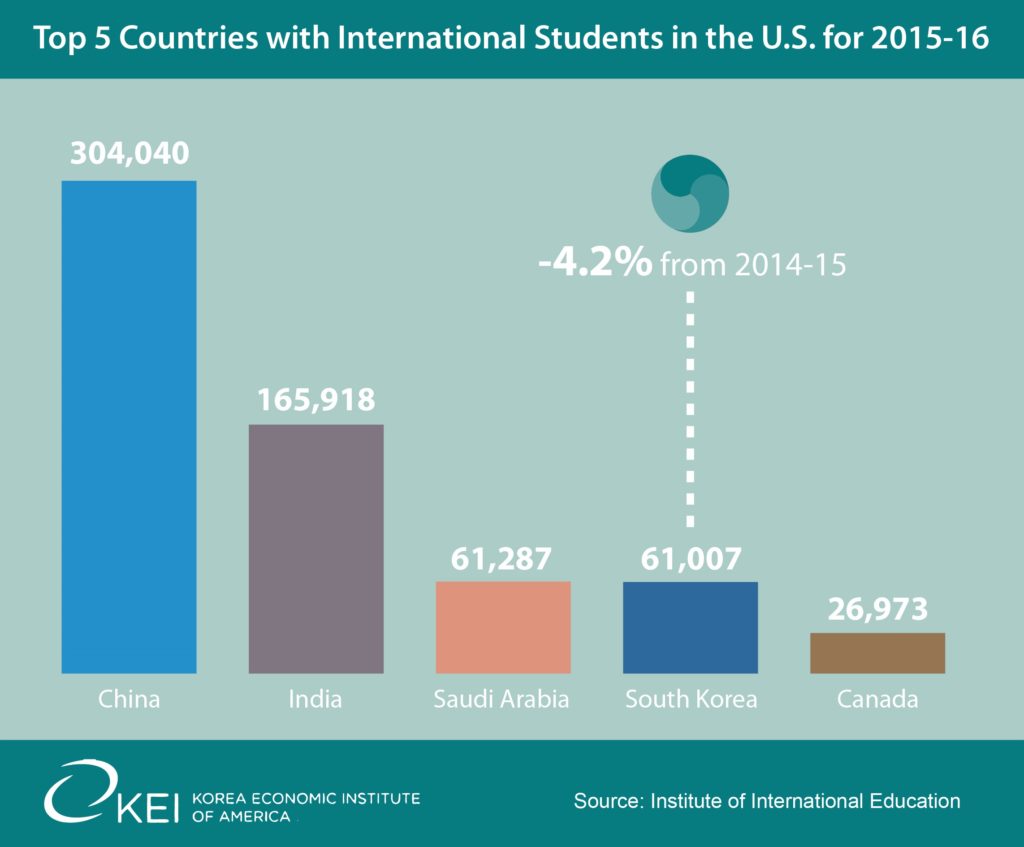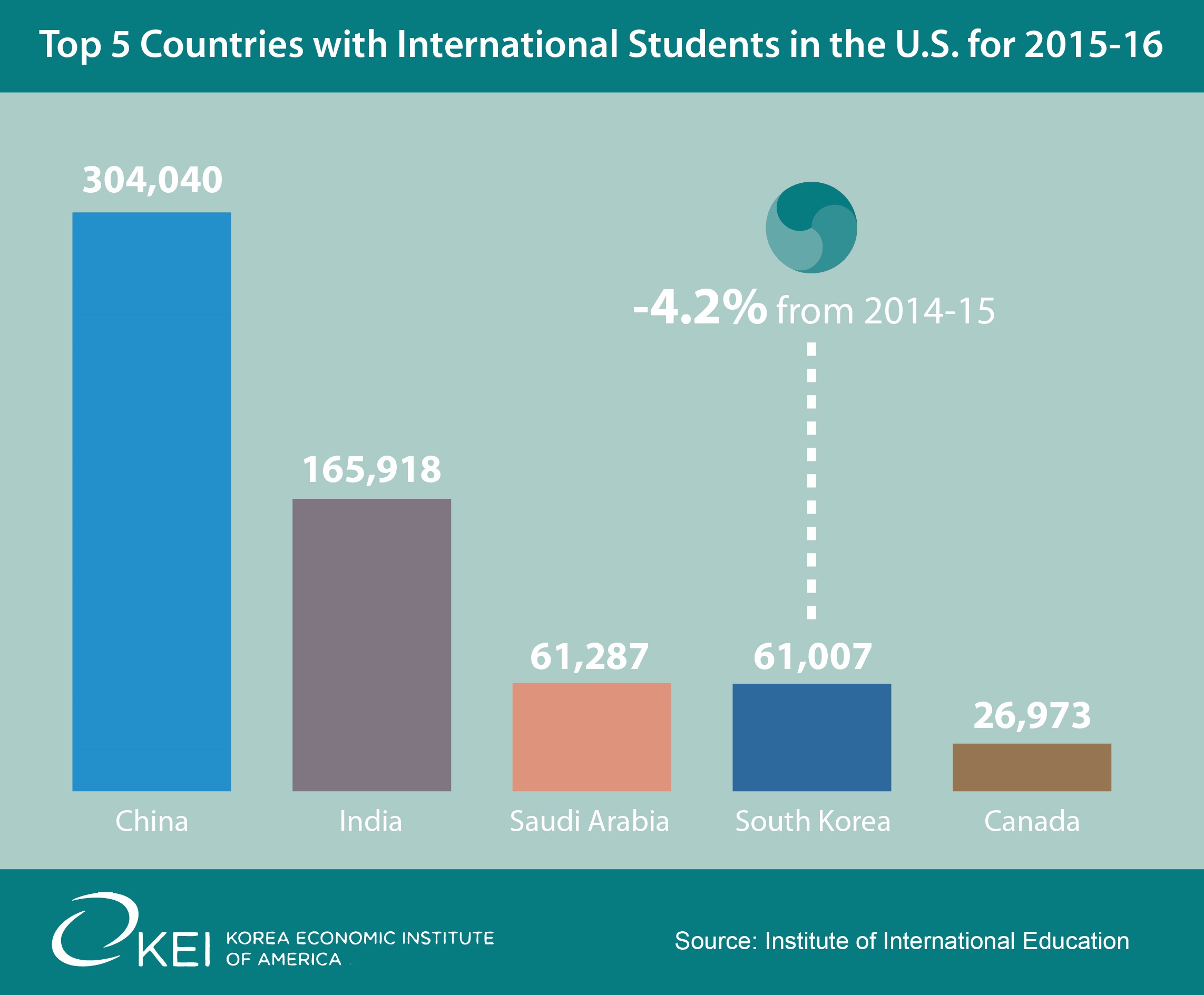The Peninsula
Korea Loses Spot as Third Largest Sender of Students to the U.S.

By Jenna Gibson
In 2016, South Korea officially dropped from the third largest source of international students in the United States to the fourth largest, now sitting behind China, India, and Saudi Arabia. The gap is small – Saudi Arabia sent just 280 more students than Korea in 2016 – but with the number of Koreans studying in the United States on a downward trend, that gap may widen in the coming years.
Korea has been the third largest source of people studying in the U.S. since 2002, when it surpassed Japan (which has since dropped to ninth place). Up until the late 2000s, the number of Koreans choosing to study in the United States was growing. But the number has dropped from a high of 75,065 in 2008 to 61,007 in 2016.
The number is still impressive – second place India is about 26 times bigger than Korea, but sends only 3 times as many students to study abroad in the U.S. The problem is that the number of Korean students choosing to come to the U.S. has been steadily dropping, a trend that is likely to continue.
A 2015 KEI blog attributed the decline in study abroad to economics – “With rising costs overseas and a stagnant economy at home, more Korean students are choosing to stay put.” Considering that since then youth unemployment has continued to set records, leading to widespread pessimism among young Koreans – it’s unsurprising that the downward trend has continued.
Interestingly, the total number of Koreans studying abroad has actually held steady at around 220,000 since 2014. It’s the geographic spread that has seen the biggest change – in 2016, China surpassed the United States for the first time as the biggest destination country for Korean students.
Many of those students are taking advantage of the fact that China is a relatively close and relatively cheap option for short-term study programs – 65 percent of Korean students in China were taking language or other educational courses. In comparison, the vast majority of Korean students in the United States (85 percent) were enrolled in a full undergraduate or graduate program.
International students are a huge boon to the United States both intellectually and economically – according to the U.S. Department of Commerce, tuition, fees, and living expenses from Koreans added $2.3 billion to the economy in 2014. The United States would do well to invest in advertising and scholarship programs to keep Korean students interested in choosing American schools for their study abroad experience.
Jenna Gibson is the Director of Communications at the Korea Economic Institute of America. The views expressed here are the author’s alone.
Photo from Tulane Public Relations’ photostream on flickr Creative Commons. Graphic by Juni Kim, KEI.

